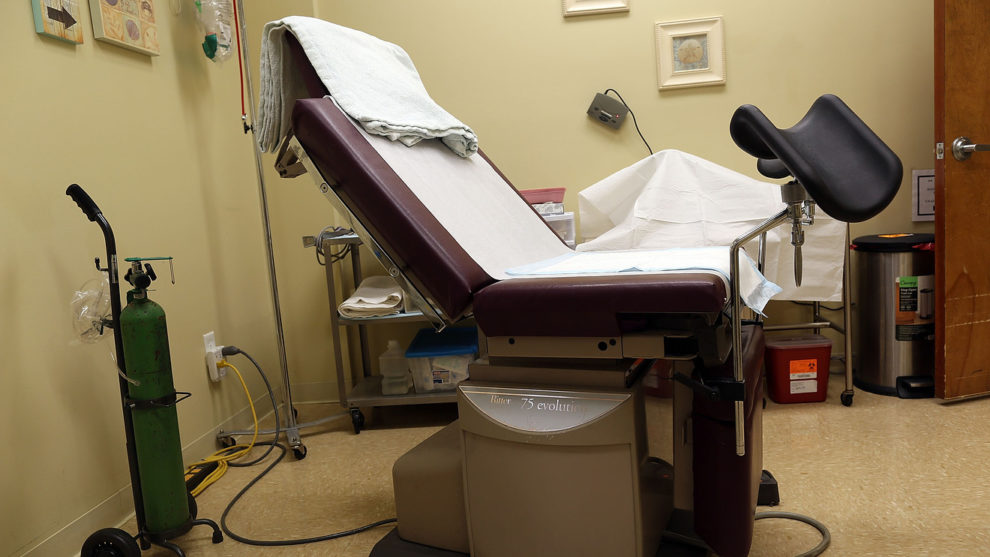
Laws that require abortion seekers to wait a period of time between counseling and the procedure can drive up the share of women of having riskier second-trimester abortions, suggests a new study distributed by the National Bureau of Economic Research. What’s more, their abortion costs are likely to go up.
Researchers from Texas A&M University analyzed the impacts of Tennessee’s mandatory waiting period (MWP), which was enacted in 2015 and requires that a minimum of 48 hours elapse between in-person counseling and a woman’s abortion.
Laws requiring two visits to a clinic are associated with a $107 increase in the price of an abortion, according to one 2015 analysis.
The policy increased the share of Tennessee women getting second-trimester abortions in 2016 by 4.1 percentage points, they found — a 62% increase from 2014. The number of abortions fell overall by 6%, though the authors cautioned that estimate had “limited statistical power.”
The waiting period also carried an added financial cost of up to $929, the study authors estimated. “In total, the mandatory waiting period could increase the monetary cost of obtaining an abortion by a total of over $900 when accounting for fees, transportation costs, lost wages, and child-care,” they wrote.
The Guttmacher Institute, a reproductive-health think tank that supports abortion rights, points out that “first-trimester abortions are much less expensive than second-trimester procedures, often by several hundred dollars.”
Study co-author Jason Lindo, an economics professor at Texas A&M and research associate at NBER, has served as “an expert witness in litigation regarding abortion regulations, including litigation regarding the regulation examined in this study,” the paper discloses.
Anti-abortion groups say the unborn have a right to life, believe life begins at fertilization and object to abortion on moral grounds.
The anti-abortion advocacy group National Right to Life says that many single mothers “find free help and support from local pregnancy care centers.” The group also suggests giving the baby up for adoption as an alternative for people who can’t afford to care for a baby.
Republicans say they oppose “taxpayer-funded abortion.” Anti-abortion groups say the unborn have a right to life, believe life begins at fertilization and object to abortion on moral grounds. They comprise a range of views from those who believe abortion is wrong under any circumstance to others who believe it’s acceptable in cases of rape, incest or when a woman’s life is at risk.
That said, some 71% of voters oppose overturning Roe v. Wade, a July poll from The Wall Street Journal and NBC News found.
Nine in 10 abortions are performed within the first 13 weeks of pregnancy, according to the Centers for Disease Control and Prevention. And, as the American College of Obstetricians and Gynecologists notes, “abortion-related mortality increases with each week of gestation” — though the risk of childbirth-related death remains far higher.
Women are required to get counseling before they can have an abortion in 34 states, 14 of which require the counseling be delivered in person, according to the Guttmacher Institute. Twenty-seven of those states mandate a typically 24-hour waiting period from counseling to procedure, and waiting periods can stretch as long as 72 hours in states like Arkansas, Missouri and North Carolina.
Women who obtained second-trimester abortions paid an average of $854, compared to the average of $397 paid by first-trimester patients.
“In states in which the counseling must be obtained in person (rather than via mail, fax, Internet or phone) and the woman must then wait a specified time period … between the counseling and the procedure, the woman is effectively required to make two trips to the health care provider in order to obtain an abortion, a requirement that could constitute a hardship for some women,” Guttmacher says.
Indeed, laws requiring two visits to a clinic are associated with a $107 increase in the price of an abortion, according to one 2015 analysis of two-visit and Targeted Regulation of Abortion Providers laws.
Advocates for mandatory waiting periods, meanwhile, “argue that they ensure women will receive information about pregnancy and abortion and will have ample time to weigh their options before deciding to terminate a pregnancy,” the present study’s authors note.
Abortion costs tend to rise after the first trimester, partly due to the amount of time and level of skill required to perform the procedure, Guttmacher Institute principal research scientist Rachel Jones previously told MarketWatch; 2013 research co-authored by Jones found that women who obtained second-trimester abortions paid an average of $854, compared to the average of $397 paid by first-trimester patients.
Six months after being denied an abortion, women were less likely to be employed full-time and more likely to be dependent on public assistance.
Three in four women who obtain abortions are low-income, and almost half live below the federal poverty level, research shows. Meanwhile, women who are denied abortions are more likely to endure long-term “economic hardship and insecurity” than women who receive abortions, according to a 2018 study published in the American Journal of Public Health.
Six months after being denied an abortion, women were less likely to be employed full-time and more likely to be dependent on public assistance, it added. The findings indicated that women who were denied a wanted abortion had four times greater odds of having a household income below the federal poverty level and three times greater odds of being unemployed after six months.
“The additional financial costs for a woman to obtain an abortion caused by Tennessee’s mandatory waiting period over and above prior costs can amount to a very large share of women’s monthly income,” the Texas A&M researchers wrote.





